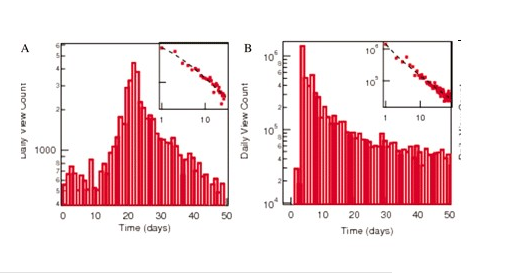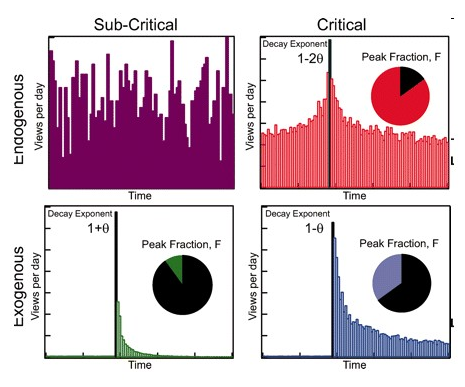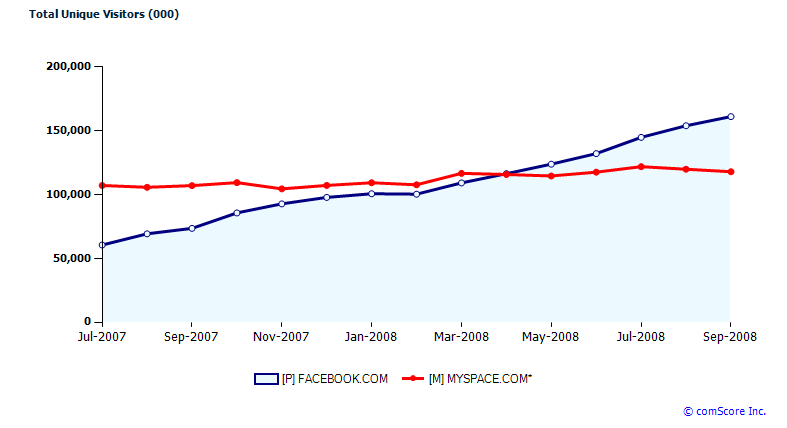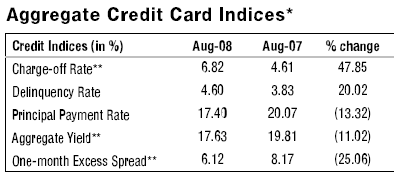
YouTube Cofounder Chad Hurley
Cofounder Chad Hurley spoke at the MIPCOM
spoke at the MIPCOM Conference in Cannes, France yesterday.
Conference in Cannes, France yesterday.
In the talk, which is transcribed below, Hurley compares the current state of online video to the nascent years of television. In 1941, he says, “CBS has just launched its new television network amidst cries that it means the death of radio.” Advertisers were hard to come by. Content owners were afraid of alienating their existing audiences. etc.
A Brave New World - The Future of Managing Content
I would like to share with you a quick story that many of you may already know.
A small group of innovators introduce a new technology that has the ability to entertain and engage people on a massive scale. Advertisers willing to risk money on this untested platform are hard to come by. Content owners are reluctant to embrace it for fear of alienating their existing audiences. And experts hail this new platform as signaling the demise of another.
As some of you may have guessed, this is not only the story of YouTube. The year is 1941, nearly 70 years ago, and CBS has just launched its new television network amidst cries that it means the death of radio.
From the printing press to the blog, from the record player to the iPod, and from the stage to the home theater, the way content has been produced, distributed and consumed in the world is constantly evolving.
The challenges we face today are not new. Today, my keynote kicks off the digital portion of this conference. I would argue that the difference between this part and the part that preceded it is semantics. We are all - digital or otherwise - confronting the same challenges and we should all be searching together for common solutions. We must embrace this new chapter, as those that came before us embraced theirs 67 years ago.
The digital age has brought with it great change and great challenges; to some it brings the goal of global content distribution closer. For others it represents a loss of control and maybe the loss of a business model. As this era accelerates – as content moves from controlled to distributed, as we migrate from a single platform delivery model to multi-platform delivery, as the world changes around us – we need to ask ourselves: can and will we adapt to this new paradigm? Are we the drivers of change, or will change drive us?
I am here to say that we want to continue to be your partner. We want to continue to work with you – the content owner – to make smarter, more informed decisions about managing and distributing your content. Many of you have already recognized the power of online digital distribution. Companies like CBS, the BBC, HBO, Sony BMG, North One and AFP just to name a few, have already joined us. In fact, yesterday we announced a major partnership with RAI, one of Europe’s biggest broadcasters. Italians have been passionately embracing our platform, discussing current affairs and enjoying performances from local talent. With RAI on board, users will be able to watch some of the most popular professional Italian content on their computer screens. And today, we are happy to announce a partnership with European powerhouse Panini. We look forward to working with both companies to provide the online content their audiences are demanding.
For those of you wary of this new, decentralized distribution model, understand that the technology exists to give you the control you need. And by opening your content to digital distribution, as so many content providers have already done, you gain unprecedented reach and scope to touch new audiences around the world, anywhere and anytime. If you embrace this opportunity, you will evolve your business model and find new channels and opportunities to deepen engagement, discover new viewers and find new, substantial revenue opportunities.
Ultimately, we all need to embark on this journey together. We cannot retreat from technological advances. Even if YouTube didn’t exist, other platforms would surely be driving this change.
There was a time when a centralized distribution model was relevant and effective. But if you listen to your audience; if you hear what they are telling you; you will understand that the days of the centralized distribution hub are ending. Your audience – today’s consumers – want access to content on PCs, TVs, mobile phones and social networking pages. And contrary to what some believe, the internet doesn’t take viewers away from traditional broadcast. As the President of NBC Research told the New York Times a few months back: “The Internet hardly cannibalizes; it actually fuels interest.” In fact, reacting to a recent Forrester study focused on engaged viewers of online video, executives from ABC, CBS and MTV all agreed that online video was adding to their total viewership rather than taking away from it. So the question before you today is: do you circle ranks and push back against the surge of change? Or, do you open yourselves to the promise and possibilities of globalized content everywhere at anytime on any device?
This world may appear chaotic, but it can be harnessed to your advantage if you’re willing to think outside the single platform delivery model. We need to continue to work together and find ways to open your content to the world, and do so with the standards, protections and strategy in place that gives you control and satisfies your audiences. Opening your distribution will give you a greater presence than ever before. And you will be able to manage your content in a way that generates new channels of revenue and taps into emerging and explosive markets, in the same way that companies like CBS and RCA, under the leadership of visionaries like David Sarnoff, did so many decades ago.
This new world is not without its challenges. The concerns that some of you have are very real. Does digital distribution mean that you lose control? What about the quality of online content?
Does the digital distribution model make sense? These are all valid and familiar questions.
The truth is that the long-anticipated convergence of TV and the computer is happening faster than anybody predicted. It’s happening now. Let’s look at just a few data points on this:
- Around 10 billion videos are viewed monthly online in the U.S. alone
- On YouTube 13 hours of content are uploaded every minute
- The number of people consuming video on their PCs is higher than ever before
- In France over 120 million hours of video content is watched per month while over 3 million mobile phone subscribers use their phone to view a video
So online video is here to stay and evolving faster and in more dynamic ways than anyone imagined, even a few years ago. As for the business questions: the market potential of online video distribution may be in its early stages, but it’s here and growing fast.
- The online video advertising market is set to be worth over a billion dollars by 2010, will reach over $3 billion by 2012, and over $5 billion by 2013
People want solutions for searching, discovering, watching, and interacting with video. And you, as content providers, are looking for new audiences and new revenue channels. Given these demands, how can we take advantage of this massive market opportunity?
Let’s recognize that video captures the visceral, dynamic quality in life and shares it with the world. This has driven YouTube’s exponential growth in the last two years. Again, 13 hours of video are uploaded to YouTube every minute. That’s the equivalent of Hollywood releasing more than 57,000 full-length movies every week. Hundreds of millions of people come to YouTube every month to search, discover and share this content with their friends.
For you, the content owners, online video provides big opportunities across the 4 Rs: Reach, Research, Revenue, and Rights Management
First, online video provides massive and targeted reach to hundreds of millions of viewers. And we’re making those videos and communities even easier to discover. Online video also provides content owners with an opportunity to extend their brand, reach new consumers, and tap new revenue opportunities, which I’ll discuss later. For this group, online video provides the benefit of longer viewer engagement with greater frequency across multiple channels.
In August of this year the International Olympic Committee launched nine Channels on YouTube. Through our platform, the IOC offered this year’s Summer Olympic Games to a truly global audience across 78 territories in Asia, Africa and the Middle East for the first time in Olympic history. Hundreds of millions of people around the world were able to engage and experience the Olympics online, many of whom never had never had the opportunity to see the Games on their televisions. All of this took place while NBC, the broadcaster that owned the rights to the Olympics in the US, effectively used our Video ID technology to monitor and quickly block copyrighted Olympic content uploaded to the site.
Second, research provides a new breed of analytic tools that dive into who, why and where your content is being watched.
The products and features being developed by online video providers continue to evolve. For example, the American rock bank Weezer launched their music video “Pork and Beans” on YouTube resulting in over 4 million views in just two days. Using our sophisticated analytics tool, the band was able to then get an in-depth look at the video’s views. This data provided an online focus group of sorts, enabling them to prepare more effective and powerful marketing campaigns. It even helped Weezer understand where their videos were being watched and then plan their upcoming tour.
And third, global distribution and analytics tools give advertisers and content owners fresh channels of revenue on new and existing forms of content. Advertisers want simplicity with reach. Online video does this by combining reach beyond TV, with the targeting, reporting and accountability of sophisticated online advertising tools and analytics. Online video began as a playground for advertisers where they could test ideas, drive brand awareness and create consumer engagement through clever viral video campaigns. In the current economic climate, this platform also provides advertisers with an affordable distribution channel and metrics to help gauge the success of a campaign and drive engagement numbers up.
As some of you may have heard, last week we announced a groundbreaking deal with CBS to test full-length feature programming on YouTube. We also designed a new video player to provide the best possible user experience when watching this long-form content. With nearly 80,000 subscribers in their Channel and 250 million views, CBS has received a strong, positive response from the YouTube community around the quality of its programming. Under the terms of this latest deal, CBS has added more than 80 full-length shows to their Channel, complementing the more than 9,000 short-form videos already available. CBS will be selling its own advertising inventory on YouTube. This arrangement allows CBS to aggregate their ad inventory across the web to increase their reach and levergae the strength of their sales force.
An then there’s the fourth “R”. And I wouldn’t want you to think I’ve forgotten that one. Of course, I’m talking about rights and rights management. From the very beginning, we’ve been committed to working with content owners to make sure YouTube remains a platform for distribution, not unauthorized uploads. In fact, over 300 media companies, including NBC, RAI, Formula One, the Olympics and Lionsgate are using innovative products like YouTube’s Video Identification tool to better manage their presence on our site. Along with the other tools in our Content management system, Video ID helps content owners decide whether to block, promote, or even generate revenue from their content.
The European Commissioner for information, society and media, Vivian Reding, recently hailed YouTube as a great example of how content producers and service providers can work to benefit each other through our Video Identification technology, saying: “The Youtube platform tells the rights owner if his content has been uploaded to Youtube. He then has a choice: leave it up as it is, add advertising - thus monetizing the content- or requesting that the content be taken down.” I couldn’t have said it better myself. And we will remain committed to introducing these types of protections tools in the future.
Ultimately, the online video experience is about empowerment. Consumers of online video are empowered to be their own content programmers, consuming the relevant mix of mass, niche and personal media they demand. Advertisers are empowered through data to better understand and engage with their audiences. And content owners are empowered, through sophisticated identification tools, to control their content and make smart business decisions with their content.
The proliferation of content will continue exponentially. And as methods for uploading, aggregating, personalizing and distributing digital content develop, content owners will find new challenges and business opportunities. Spurred by technological innovation, people are already looking beyond their laptops to upload, customize and distribute content from and to any device.
Video content delivered to mobile devices will open consumers, advertisers and content creators to a world of opportunity. Everything from movie watching and sharing to hyper-targeting and dynamic, interactive, location-relevant ads are emerging within the mobile market. As the Web grows, so will videos’ presence in it. Accelerated by the power of embeddable video, developers will find new, innovative ways to push the boundaries of how ads are served and watched online. And the jump from the desktop to the TV, or the phone to the TV, or the camera to the TV, will all become seamless.
Gaining control of online video content and discovering effective business models are vital not only for our growth, but for our common survival. Online video is already fully integrated into the fabric of the Web – its presence is universal, inspiring and empowering to all that embrace it. In the very near future, the distribution of online video will soon cease to be seen as a threat, but rather as a fundamental distribution solution that can be personalized on desktops, phones and tv’s alike.
Where we are today is not the YouTube era. It is not the digital content era, or the multi-platform era. Where we are today is an extension of the work you have all done, built on the shoulders of CBS, RCA and the other innovators who came before us. There is no old media. There is no new media. There is one media with one common purpose: to inform, move and inspire the world through information, art and entertainment. Together, we can find a solution that will benefit everyone in this ecosystem, from consumers to advertisers to the content owners alike.
Thank you very much.











 Details emerged today on Google’s broad social networking ambitions,
Details emerged today on Google’s broad social networking ambitions, 

